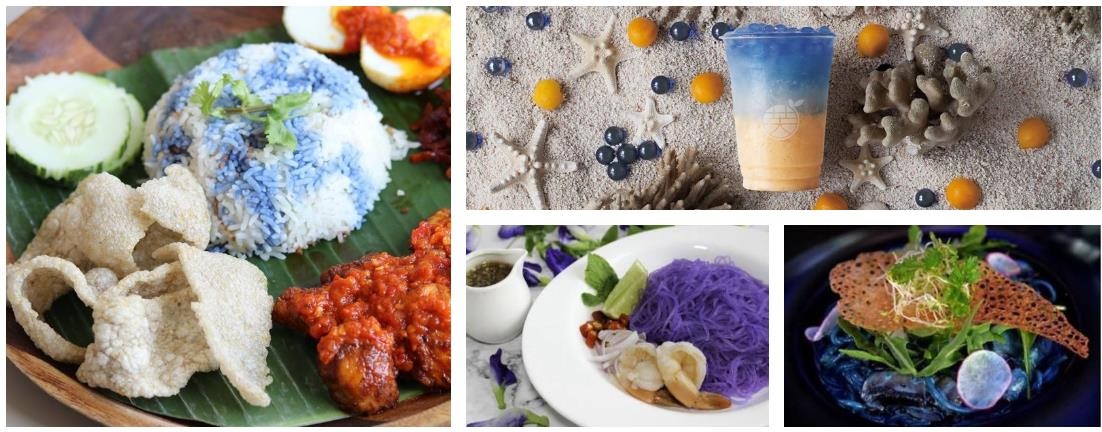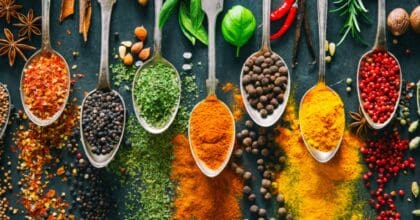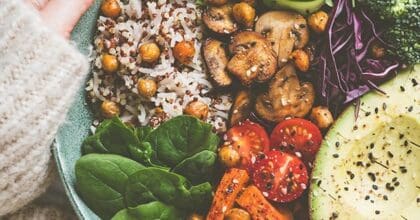Distinct for its natural blue shade and colour changing properties, the butterfly pea flower (Clitoria ternatea) has been spotted in Asia’s food and drink, as well as foodservice sectors. Native to Southeast Asia where it is used in teas and as a natural food dye, the butterfly pea flower is found in a number of traditional recipes from Singapore, Thailand, Malaysia and Myanmar, among others.
This flower is rich in anthocyanin, a potent antioxidant that changes colour to purple when mixed with acidic substances like lemon juice. It is this colour-changing characteristic that makes the butterfly pea flower a trending ingredient to use in food and drink.
It is not only its colour, heritage and natural profile which make the butterfly pea flower fascinating, but also its apparent robust health benefits. It boasts anti-inflammatory properties, promotes anti-aging and supports brain health. However, studies investigating these health benefits have yet to be conducted.
Generating buzz in Asia’s foodservice sector
Beyond just flavour, more and more brands and companies are taking into account the sensory attribute that colour can provide to consumers.
Starbucks is known for its adventurous and innovative beverages. Following the highly talked about launch of the Starbucks Unicorn Frappuccino in the US, the coffee chain launched yet another visually-appealing drink, but this time in Asia. Earlier this year, Starbucks launched its Butterfly Pea Lemonade Cold Brew which features a mesmirising hue of butterfly pea flower tea, layered with lemonade and topped with cold brew coffee.
Colour changing drinks resonate well with today’s consumer and are aligned with Mintel’s 2016 Global Food & Drink Trend ‘Eat with Your Eyes’ which outlines how more visual and share-focused societies call for innovations that are boldly coloured, artfully constructed, and sometimes, just plain cool.
Butterfly pea flower is a common ingredient used in Thai, Malay and Peranakan cuisines, thanks to its vibrant hue which makes it perfect for use during traditional events like weddings or festivals. In Singapore, however, it is now seeing usage as a natural food colouring, and is being incorporated with eye-catching effect into food and drink offerings ranging from carbonara pasta, to glass noodles and muffins.

Bringing colours to the packaged food and drink sector
Manufacturers can experiment with vibrant colours to make packaged products worthy of consumer praise on social media channels like Instagram. Mintel Trend ‘Play Ethic’ highlights how, as lives become more hectic and downtime less relaxing, consumers seek a balance between working like an adult and playing like a kid. Bright colours can help make eating or drinking more fun.
While opportunities do exist for the development of more unique colours in food and drinks, there remains demand for these colours to be sourced naturally. Globally, the penetration rate of artificial colouring has dropped by almost 10% over the past three years, and 19% over the past five, according to Mintel New Global Products Database (GNPD).
The food and drink category has leveraged the use of natural and plant-based ingredients such as turmeric, spirulina, purple corn, matcha as well as charcoal to create vibrant-hued drinks, snacks and other foods that are social media-worthy, piquing consumer interest. Natural colours are generally perceived as being healthier than their synthetic counterparts, and this idea is predicted to spread.
Butterfly pea flower is well positioned to flourish as a natural colouring ingredient. As the share of artificial colours in food and drink products continues to fall, brands should be encouraged to explore the use of ingredients like butterfly pea flower as an alternative.
















![[WATCH] Trending ingredients to watch: Hydroxydecyl Ubiquinone](https://www.mintel.com/app/uploads/2023/06/Hydroxydecyl-Ubiquinone-艾地苯_Digital_Blog_1000x305.jpg)
![[WATCH] Trending ingredients to watch: Monk Fruit](https://www.mintel.com/app/uploads/2023/06/Monk-Fruit-罗汉果_Digital_Blog_1000x305.jpg)
![[WATCH] Trending ingredients to watch: Ginseng](https://www.mintel.com/app/uploads/2023/04/Ginseng-人参_Digital_Blog_1000x305.jpg)
![[WATCH] Trending ingredients to watch: Nonapeptide-1](https://www.mintel.com/app/uploads/2023/04/Nonapeptide-1-九肽-1_Digital_Blog_1000x305.jpg)
![[WATCH] Trending ingredients to watch: Pitaya](https://www.mintel.com/app/uploads/2023/03/Pitaya-火龙果_Blog_1000x305.jpg)



















